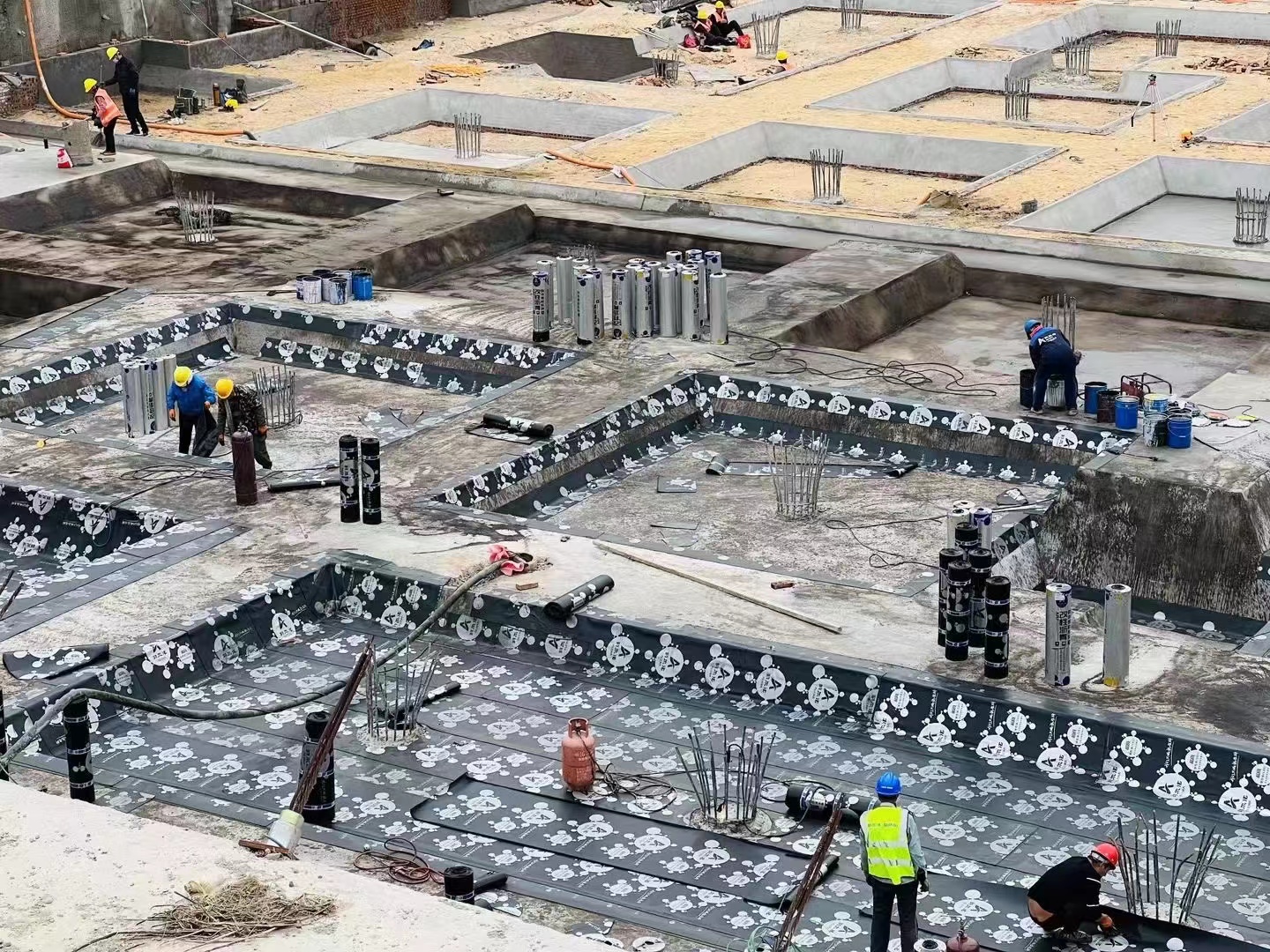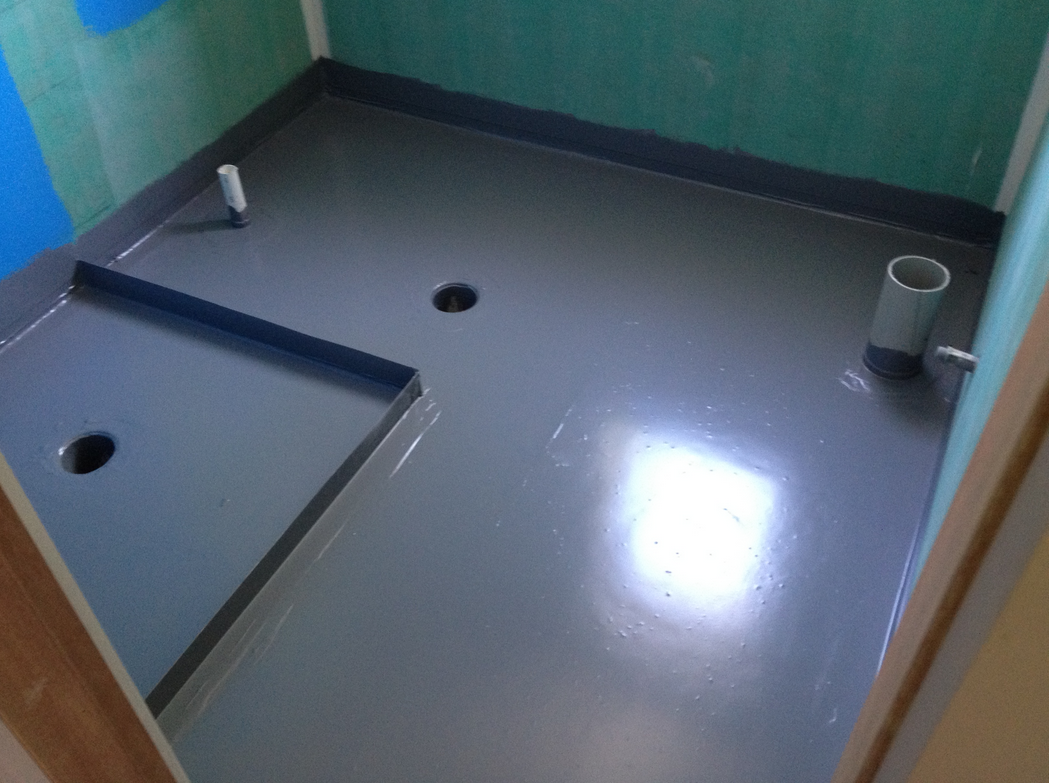What is building waterproofing ?
Building waterproofing is a defensive measure taken in parts such as the outer envelope and basement to prevent water from harming the building. Including waterproof construction treatment and waterproofing material selection.
Building Waterproofing is mostly used in roofs, underground buildings, underground parts of buildings, interior rooms and water storage structures that need to be waterproofed. According to the different measures and methods adopted, it can be divided into two categories: material waterproofing and structural waterproofing. Material waterproofing relies on building materials to block the passage of water to achieve the purpose of waterproofing or increase the ability to resist leakage, such as membrane waterproofing? The structural form blocks the passage of water to achieve the purpose of waterproofing, such as waterstops and Cavity structure, etc.
Building waterproofing is a defensive measure taken in parts such as the outer envelope and basement to prevent water from harming the building. Including waterproof construction treatment and waterproofing material selection.
Commonly used waterproof construction methods include structural waterproofing and material waterproofing. Structural waterproofing uses the shape of the components themselves and their mutual overlap to achieve the purpose of waterproofing. It is mainly used for component self-waterproof roofs, prefabricated building exterior wall panel joints, etc. Material waterproofing uses the impermeability of materials to cover and seal components and gaps. Commonly used for waterproofing of roofs, exterior walls, basements, etc.
There are many types of waterproof materials, mainly asphalt, plastic and rubber, and waterproof concrete. Asphaltene waterproofing membranes are commonly used in underground, hydraulic, industrial and other construction applications. Plastic and rubber waterproofing materials include films, coatings, waterproofing agents, caulking sealants, etc. Waterproof concrete is mainly used in underground engineering construction and roofing projects, etc.

MEMBRANE WATERPROOFING
Asphalt and an appropriate amount of powder are heated to prepare a hot asphalt paste cement (i.e., mazum), and the linoleum (see waterproofing membrane) is laid in layers on the internal and external surfaces of roofs, underground buildings, and water storage structures. This kind of membrane waterproofing has been used for more than 100 years, and it is a waterproofing method commonly used on flat roofs and basements. Using diesel to dilute the asphalt so that the margarine can be painted at normal temperature is called cold margarine. Rolled material waterproof roofing usually adopts the two felts and three oils or three felts and four oils method, that is, after applying cold base oil on the base leveling layer, the margarine and linoleum which have certain heat resistance, flexibility and adhesion requirements are separated. The layers are laid alternately, and dry adzuki stones are sprinkled on the last layer of marzine as a protective layer. When used in underground construction, it is generally only used as an auxiliary measure for moisture-proofing or multi-layer waterproofing, and a half-brick wall is laid with cement mortar as a protective layer. At the junction of the wall and the floor, embedded pipe fittings, gutters, parapets, rainwater holes, etc., it is usually necessary to lay 1 to 2 additional layers of linoleum. In humid areas or during roof construction in rainy seasons, in order to prevent the moisture trapped in the insulation layer or leveling layer from evaporating and causing the coil to bulge and damage, an exhaust channel is often formed on the leveling layer and exhaust holes are provided on the roof or eaves. Connected to the atmosphere to allow water vapor to be discharged smoothly. When paving the membrane on the roof, it should be from low to high, leaving an overlap layer by layer. When the roof slope is small, it should be laid in the direction parallel to the ridge; when the roof slope is large, it should be laid in the direction perpendicular to the ridge, and the overlapping joints should be in the prevailing wind direction. The thickness of mazum for paving membranes is 1 to 1.5 mm in roofing projects and 1.5 to 2.5 mm in underground construction projects. For roof panel joints without thermal insulation layer, it is advisable to lay an linoleum strip with a width of not less than 300 mm on the bottom layer of linoleum to prevent the main linoleum layer from being cracked due to structural deformation. Elastic waterproof membranes are mostly made of synthetic rubber. It has good elasticity, high strength, durability, easy construction, and can adapt to temperatures of -40 to 100°C. China developed a vulcanized rubber-plastic waterproof membrane in 1982, which was used as the waterproof layer of the pool of the Great Wall Hotel in Beijing (see the color picture of the pool of the Beijing Great Wall Hotel using rubber-plastic membrane to lay a waterproof layer), with good results.

WATERPROOF COATINGS MATERIALS
Apply a waterproof liquid coating to the roof or underground building surface screed. Commonly used waterproof coatings are asphalt-based, chemical by-products and synthetic resins.
①Asphalt-based waterproof coatings are available in solvent type and emulsion type. Among the emulsion types, the rubber-modified emulsified asphalt waterproof coating has better performance, is easy to construct, and is cheap. Lime paste emulsified asphalt coatings are also effective.
②Chemical by-products are mostly made from styrene tar plus tougheners or emulsifiers, or synthetic fatty acid residues plus solvents. However, the performance is not stable enough, which affects the waterproof effect.
③Synthetic resin waterproof coating is easy to apply, has strong adhesion and good effect, but is more expensive. Elastic coatings made of liquid polymer synthetic materials are formulated with synthetic rubber or synthetic resin solutions and emulsions. They have good waterproof properties. They mainly include flux-type coatings such as neoprene-polyvinyl chloride and polyurethane and other rich coatings. Flexible coating product. China began producing two-component polyurethane coating films in the 1970s.
In order to enhance the waterproofing effect, the double-membrane waterproofing method is adopted, that is, a solvent-free waterproof layer is applied on the coating film. Due to the good extensibility of this material, when the base layer or underlying structure cracks and the upper and lower layers peel off, the coating can still play a waterproof role. Polymer material coatings have good waterproof performance, but poor ozone resistance and are prone to aging under ultraviolet light. They are generally used for indoor waterproofing, especially in areas where the base layer has a complex shape and it is inconvenient to use roll materials for construction.
RIGID WATERPROOFING
A rigid waterproof layer composed of concrete, cement mortar and other materials or mixed with waterproofing agents. According to the different parts of the engineering structure and materials used, it can be divided into several methods.
① The engineering structure itself uses waterproof concrete (use aggregate gradation to make the concrete dense or add admixtures, or both).
②A thin layer of reinforced fine stone concrete or a cement mortar surface layer mixed with waterproofing agent is added to the surface of the structural layer.
③ Cover the surface of underground buildings or water storage structures with cement slurry and cement mortar in layers, and apply multi-layer plastering. In order to prevent dry shrinkage cracks in concrete or cement mortar, it is necessary to strengthen the maintenance of the early hardening process. Waterproof concrete can not only be waterproof, but also function as a load-bearing and enclosure structure, and is easy to construct. When laying a rigid waterproof roof with reinforced fine stone concrete, the construction must be carried out in separate sections. It is advisable to leave the lattice joints at structural supports, component junctions, board seams, etc., and then use caulking grease to seal the lattice partitions. Before pouring the fine stone concrete waterproof layer, apply an isolation layer with white ash mortar or yellow mud on the structural layer to reduce the risk of cracking the waterproof layer due to changes in the structural layer. In recent years, China has also used concrete mixed with alunite expansion agent or reinforced roof waterproofing, which has also achieved certain results.
Traditional membrane waterproofing uses thermal operation methods, which are labor-intensive, unsafe, operators are easily burned, and pollute the environment. It is expected that in the future, many types of cold-work construction will be used, with high ductility, aging resistance, high efficiency, and low price. The number of waterproof materials will gradually increase, and waterproofing measures and methods will become simpler and more complete.
STRUCTURAL WATERPROOFING
A general term for taking correct structural forms to prevent rainwater or groundwater from intruding indoors. The cavity structure of wall panel joints and the detailed structure of deformation joints are both structurally waterproof. The waterproofing treatment of deformation joints in underground buildings usually depends on the level of water pressure, whether it is corroded and withstands high temperature conditions, and waterstops made of plastic, rubber, copper plates or stainless steel are selected. The composition can adapt to settlement, expansion and contraction, and Waterproof construction. Cavity waterproofing is a form of waterproofing for large siding joints. It forms a cavity inside the board seam, uses the effect of vertical or horizontal pressure reduction, and borrows the gravity of water to cut off the capillary passage of the board seam to drain rainwater. There are vertical seams, dripping horizontal seams, tongue-and-groove flat seams and other structural forms.
Waterproofing is used in buildings whether underground, on the roof or in the bathroom. Different waterproof materials are used to waterproof or moisture-proof the building according to the waterproof level required by the design. It is mainly divided into rigid waterproofing (such as self-waterproofing of concrete structures) and flexible waterproofing (such as self-waterproofing). Adhesive waterproofing membrane, SBS modified asphalt waterproofing membrane, PVC membrane, acrylic coating, JS coating, etc.). Although the waterproofing project budget only accounts for a small part of the construction budget, its role is extremely huge. If the building is not waterproofed, the basement will leak, rendering the huge underground space unusable or causing catastrophic collapse. For example, subways, culverts, civil air defense projects, etc. cannot be used, thus causing huge losses.
The company is the world’s best N 21% ammonium sulphate, npk fertilizer 15-15-15 compound, ammonium sulphate water soluble fertilizer supplier. We are your one-stop shop for all needs. Our staff are highly-specialized and will help you find the product you need.